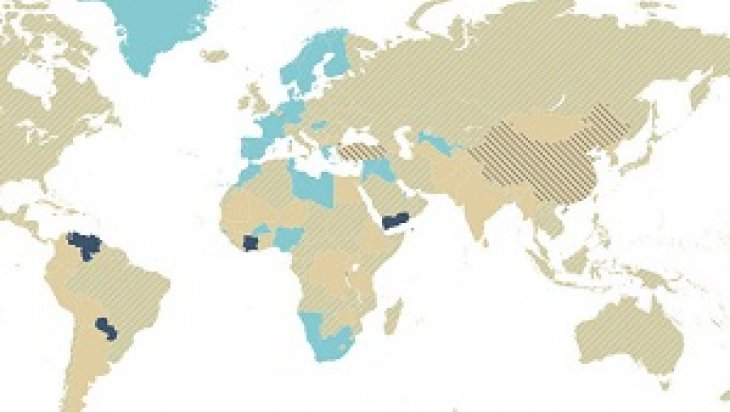Key Message in Helsinki Rules After Half a Century: A Still Workable Guideline for the Middle East

in August 1966, i.e. some fifty years ago, in Helsinki, Finland,the International Law Association (ILA) adopted a set of rules on how rivers and connected groundwaters that cross boundaries may be utilized. These are called The Helsinki Rules on the Uses of the Waters of International Rivers. While these rules are niether legally binding, nor have enforcement mechanisms, they appeared to be significant in at least two senses. First they are one of the most notable pioneering codification efforts in international water law. They set the ground for further work which culminated in 1997 UN Watercourses Convention and the 2004 Berlin rules which finally superseded Helsinki Rules. Second, despite lack of legally binding character, these rules have a profound normative impact on the international community. States have tried to adhere these rules whenever possible in dealing with transboundary watercourses problems.
One of the key message of Helsinki Rules is centered around Article 4 which reads “Each basin State is entitled, within its territory, to a reasonable and equitable share in the beneficial uses of the waters of an international drainage basin.” The key concept here is the “reasonable and equitable share”.
Ensuing article provides a quite detailed acount on how this could be determined: “ “a reasonable and equitable share” within the meaning of article IV to be determined in the light of all the relevant factors in each particular case.” According to the Helsinki Rules, relevant factors which are to be considered include, but are not limited to:1. The geography of the basin, including in particular the extent of the drainage area inthe territory of each basin State;2. The hydrology of the basin, including in particular the contribution of water by eachbasin State;3. The climate affecting the basin;4. The past utilization of the waters of the basin, including in particular existingutilization;5. The economic and social needs of each basin State;6. The population dependent on the waters of the basin in each basin State;7. The comparative costs of alternative means of satisfying the economic and socialneeds of each basin State;8. The availability of other resources;9. The avoidance of unnecessary waste in the utilization of waters of the basin;10. The practicability of compensation to one or more of the co-basin States as a meansof adjusting conflicts among uses; and11. The degree to which the needs of a basin State may be satisfied, without causingsubstantial injury to a co-basin State.
Berlin Rules of 2004, which superseded Helsinki Rules, redefined these factors, albeit broadly with a similar meaning. A notable difference was that Berlin Rules have added the “environmental harm” as one of major factors in determination of “reasonable and equitable” use.
Helsinki Rules further specify that “the weight to be given to each factor is to be determined by its importance in comparison with that of other relevant factors. In determining what is reasonable and equitable share, all relevant factors are to be considered together and a conclusion reached on the basis of the whole.” Therefore, Rules are flexible enough to enable tailor-cut solutions in basins with different characteristics.
According to Helsinki framework, a use or category of uses was“not entitled to any inherent preference over any other use or category of uses.” What Berlin rules have added to this framework is the emphasis on vital human needs. According to Berlin Rules, States shall first allocate waters to satisfy vital humanneeds.
According to Helsinki Rules, peaceful settlement of disputes, in consistence with the prevailing customary international law and specifically Charter of the United Nations, should be a genera l mode of conduct between states (Article 17): “States are under an obligation to settle international disputes as to their legal rights or other interests by peaceful means in such a manner that international peace and security and justice are not endangered.” Article 72 (1) of Berlin Rules also asserts “States shall resolve disputes concerning issues within the scope of these Rules through peaceful means”.
Overall, Berlin Rules brought slight modifications to the key message of Helsinki Rules. The terms “reasonable” and “equitable” remain to be significant beacons that states should follow. Determination of what reasonable and equitable are, requires joint efforts towards creation of data sets over which accurate decisions can be made. Helsinki Rules in this respect, was, and is a call for collecting and sharing data. Inventory works on the basic parameters in a given basin should be the first step to take. Instead of trying to reach sharing arrangements without realible datasets, countries should, working in cooperation, need first to find solutions to following and similar questions: What are the boundaries of the basin? What are the hydrological data in the basin? What are the effects of the climate(s) in the basin, how are these effects changing in time? What are past, existing and planned utilizations? What are justified water needs of basin countries? What are viable alternatives? In brief, vis-à-vis the transboundary water issues in the Middle East, the key message of Helsinki Rules still provides a workable solution. In all six major transboundary basins in the Middle East (the Nile, Kura-Aras, Euphrates-Tigris, Nubian Sandstone, Jordan, the Orontes), we need more data to proceed further.






